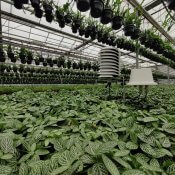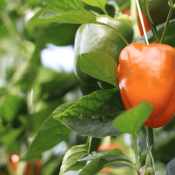Agritech is great, but what’s the ROI?
What’s the ROI of data-driven agriculture? What are the benefits of real-time, remote monitoring for agribusinesses? How does a collaborative data platform help you have a better harvest?
When you’ve developed technology you’re excited about (like we have) that’s helping real customers (over 180 of them) be more productive, you want to put some of the big numbers in bold:
ROI >3000%
ROI >250%
ROI 128%
2.5% increase in production
256.4% ROI within a year
5% reduced annual energy costs
We don’t just share these to pat ourselves on the backs. They’re our customers’ achievements, and they’re worth talking about. Good ideas are worth sharing. We’ve seen growers within our community sharing experiences, sharing strategies and replicating each others’ successes. Some grow the same crops— but we’ve seen firsthand that growers don’t necessarily have to work in completely similar contexts to face similar challenges, or learn from one another.
But if you ask us what smart, wireless sensors, a robust (and extremely scalable) network and an ever-evolving, integration-friendly agri-data platform can do for your business, you won’t get a hard number. And that’s not because we aren’t confident in the technology.
Agribusinesses are unique.
Comparing performance 1:1 can be very difficult. So many factors can impact a harvest, and context matters: the region, relative technical advancement, manpower, the specific crop to name just a few. We wouldn’t want to simplify a complex industry with so many moving parts– an industry that still depends on cooperating with nature!– for marketing purposes. So we don’t.
Instead, we share real stories of innovation to demonstrate what’s possible.
And show that it’s been possible for customers of all sizes, with various crops, in a variety of contexts, farm to fork, across the globe.
So what are the returns on crop monitoring?
They’re usually interconnected. We’re constantly discovering the impact of 30MHz tech on customers. Depending on the unique context of the agribusiness, a different aspect of the tech can be the game changer. Remote, accurate monitoring saves time on manual data collection, and enables more granular and consistent measurement than previously possible. Because sensors are wireless, can be placed anywhere and moved when necessary, agribusinesses are able to quantify and monitor the entirety of their environment, without limits. With time saved on measurement, and new insights on crops, manpower can be refocused on other tasks, and labour productivity can be increased.
The power of real-time feedback
With a near-instantaneous feedback mechanism, growers, IPM strategists, irrigation specialists and R&D can more confidently take risks and experiment with their approaches— knowing that results and changes can be explored and analysed in graphs, anomalies will be immediately identified with notifications, and social features like groups, comments and feeds make it easier to crowdsource expertise within (or outside) the organisation. In a chat about the benefits of 30MHz, Siberie Gubbels crop manager Geert Colbers mentioned: “I used to play it safe more often before working with 30MHz technology, now I feel I can try more approaches, like letting in more sunlight to optimise profit from the sun.” Accurate measurement that can be presented in multiple forms (charts, heatmaps, visualizations), drilled down and shared with live updates can help validate strategic decisions. When discussing his work on preventing pansy mottle syndrome through microclimate management, horticultural consultant Chris Need points to 30MHz insights to confirm his team’s strategy: “We now have evidence to back our approach: we know we need to focus on what we need to control stress, and we see that if we don’t control those factors, we’ll have a negative result, with a delay of about two weeks.”

Armed with insights, customers have the historical context to shape strategy, alongside the quick and immediate information necessary to take decisive action. Whether it’s preventing losses due to sunscald, avoiding rot and disease including mycosphaerella, preventing product loss by managing coldstore temperatures, transport conditions and shelf life or improving crop quality while maintaining product consistency (consistent conditions lead to consistent crops), optimising and protecting crops tends to have resource-saving implications. Kwekerij Gubbels saw a 2.5% increase in pepper production.

Impact on an ecosystem
The factors that affect harvests and agri-business productivity are interconnected. So are the results of optimisation. A UK-based (Kent, to be specific) Packhouse for 50 farmers monitors conditions using the 30MHz ZENSIE platform, capturing data with temperature and humidity sensors. The packhouse has significantly enhanced its quality control with the wireless sensors, as more accurate data is now collected to an electronic record in real-time. This process had previously been manual, and required 2-3 hours of work daily. In one instance, the customer was alerted to an overnight coldstore malfunction with ZENSIE notifications (based on real-time monitoring). Not only did identification of the malfunction avert a potentially significant loss, it helped save energy.
The bold numbers above are all results from real customers. 30MHz tech has helped a customer see 5-10% reduction in energy costs across large scale greenhouses by monitoring temperatures at extremities of greenhouse and maintaining more constant temperatures. It’s helped a flower grower significantly reducing mildew (and so boosting production) by maintaining humidity levels below 80%. Besides reducing production losses by 2-3%, it’s given an ROI of >1000% to a pepper grower, with a 1-2 month payback. It’s helped a plant breeder pay for the investment within 2 months, by almost completely eliminating pesticide use, using microclimate data to maintain conditions that are inhospitable to pests.
Agribusinesses are ecosystems. Behind every ROI metric, there’s a series of related benefits that have yet to be quantified.


30MHz is typing… Our extended support team is ready to chat!
At 30MHz we think it’s important that our users can use our platform in an optimal way. At times you may have questions and you would like some help from our support team. Email and our support page filled with helpful articles were your go to’s. But we thought it was time for something extra… ...Read more
New 30MHz connect casing: How we protect your tech
To make sure your dataflow is fully protected, 30MHz introduces a new connect casing: waterproof, dust proof and even resistant to hits. This special shield will last longer and ensure a reliable dataflow from the connected sensor. What does that full protection mean? That’s what we will explain in this article. Watertight: resistant to wetness ...Read more
Smart assistant at work
After the launch of the smart (AI) assistant at GreenTech, the first growers have started using this new feature. The assistant helps them gain insights from their data faster and supports daily decision-making in the greenhouse. Growers report that they use the assistant for: Calculating differences in water content throughout the day Quickly identifying trends ...Read more


